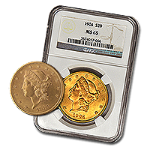- 888-696-4653
-
888-696-4653
Call Us
-
0
Cart
-
Open Account/Login
Open Account/Login
Much talk has been made this summer about the Fed and its possible actions regarding tapering its $85 billion monthly asset purchases. At first it was definitely going to happen in September, then maybe, and now no one knows when the tapering will happen. Of course, with all of this speculation and guessing comes analysis and predictions of how this action can or will affect the markets.
Some experts initially said that this tapering would negatively affect gold. However, gold has seen recent success, and others are now claiming that regardless of the Fed’s decision to taper, gold will continue to climb.
Just what are the implications of the $85 billion per month? It equates to over $1 trillion per year, and equals over 20 million new jobs paying $50,000 annually. It is also enough money to end world hunger instantly dozens of times over, or pay for every high school student to attend a four year college in full. Clearly, we are talking about a lot of money.
However, the economy only grew 1.7% in Q2, despite this huge monthly government investment. In other words, our economy needs this monthly influx to avoid a significant crisis. Even the notion of tapering earlier this year caused a swift and severe sell-off, so imagine what the market conditions will be like if it does occur.
So how will this affect gold? According to some, if the Fed does not taper, gold will continue to climb. If the Fed does taper, then gold will still climb, because people will invest in gold—physical gold—as an alternative to the stock market, which will likely take a huge hit (as will housing and credit markets).
With this in mind, investors should strongly consider buying physical gold now. The Fed could announce tapering sometime in September, and if the expected market sell off and panic ensues soon after, physical gold demand will likely jump. This will lead to higher prices, which is good for investors from a value perspective, but bad if you waited too long to buy, and have to pay a higher price.











